Abstract
When infant rhesus monkeys were exposed to lead via the addition of lead acetate (0.5–9 mg/kg body weight) to their formula or by the consumption of lead particles from lead-based surrogate mothers, they developed symptoms of lead intoxication within 6 weeks. Seizures, muscular tremors, and altered social interaction were the predominant changes. Visual impairment was also apparent in the more severely affected animals. In the animals showing obvious symptoms lead levels varied between 300 to 500 μg/100 ml of blood. Even in those animals having blood lead levels below 100 μg, hyperactivity and insomnia were observed. When the exposure to lead was eliminated, seizures subsided and visual impairment was reduced; however, the abnormal social interaction persisted. These animals also experienced a gradual decline in hematocrit and hemoglobin values during the period of examination. Liver and kidney biopsies obtained from these lead-exposed animals revealed characteristic intranuclear inclusions.
When adolescent and adult monkeys were exposed to doses of lead acetate similar to those employed in the infant experiments, lead levels in excess of 200 μg/100 ml of blood were recorded. However, there were no obvious behavioral abnormalities observed. There were, however, numerous lead inclusion bodies in kidney biopsy specimens from these animals.
These data suggest that, like man, the infant nonhuman primate is much more susceptible to lead intoxication than is the adult. The clinical and behavioral changes recorded in these infant rhesus monkeys suggest their use as an experimental model to evaluate lead intoxication.
Full text
PDF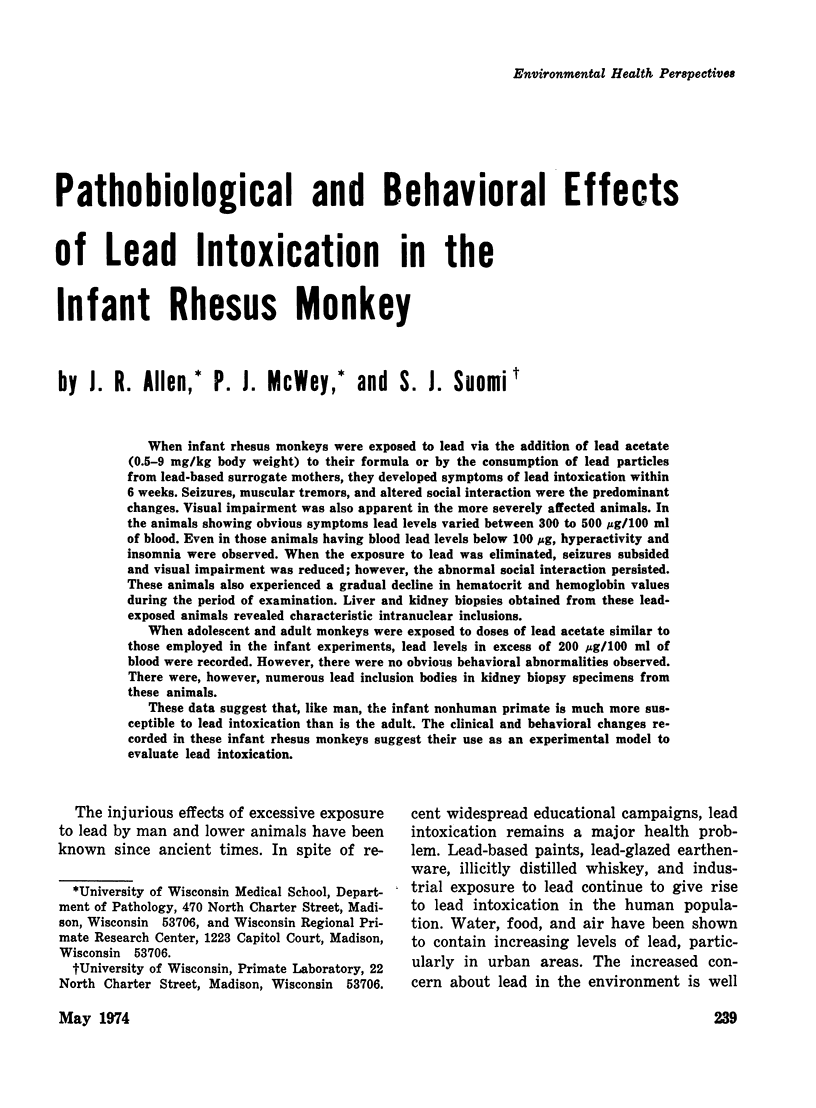
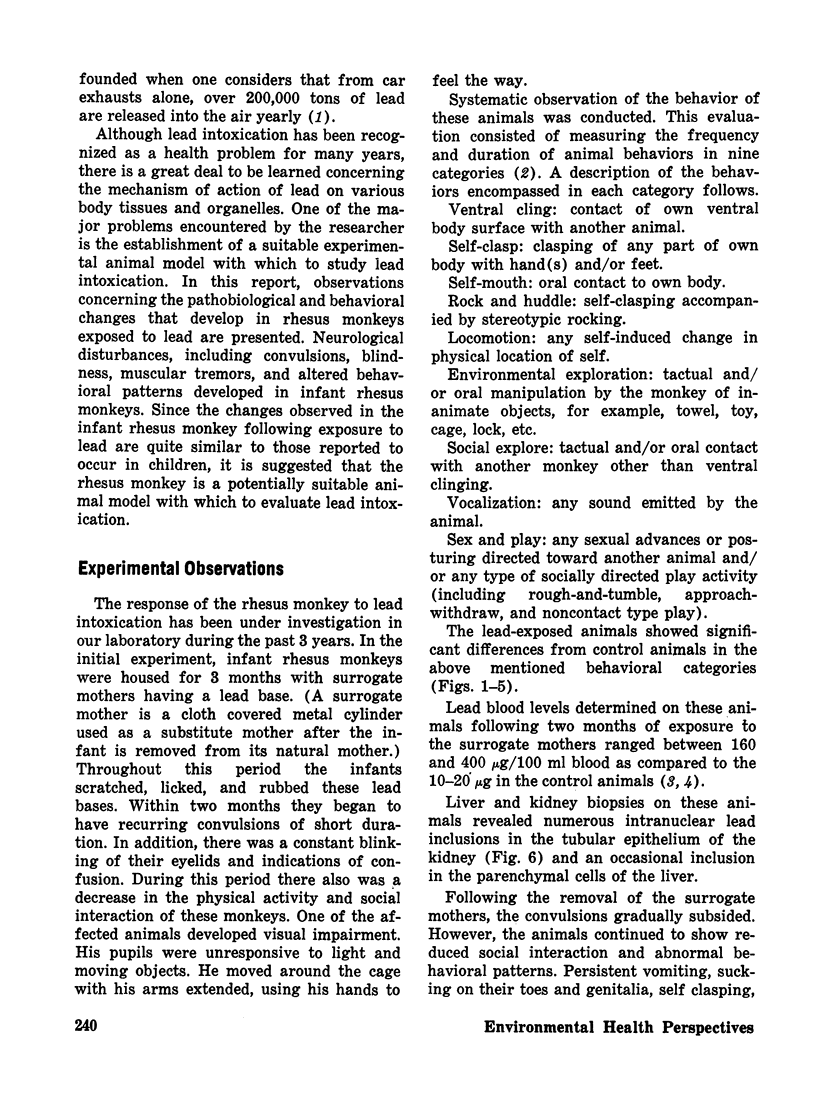
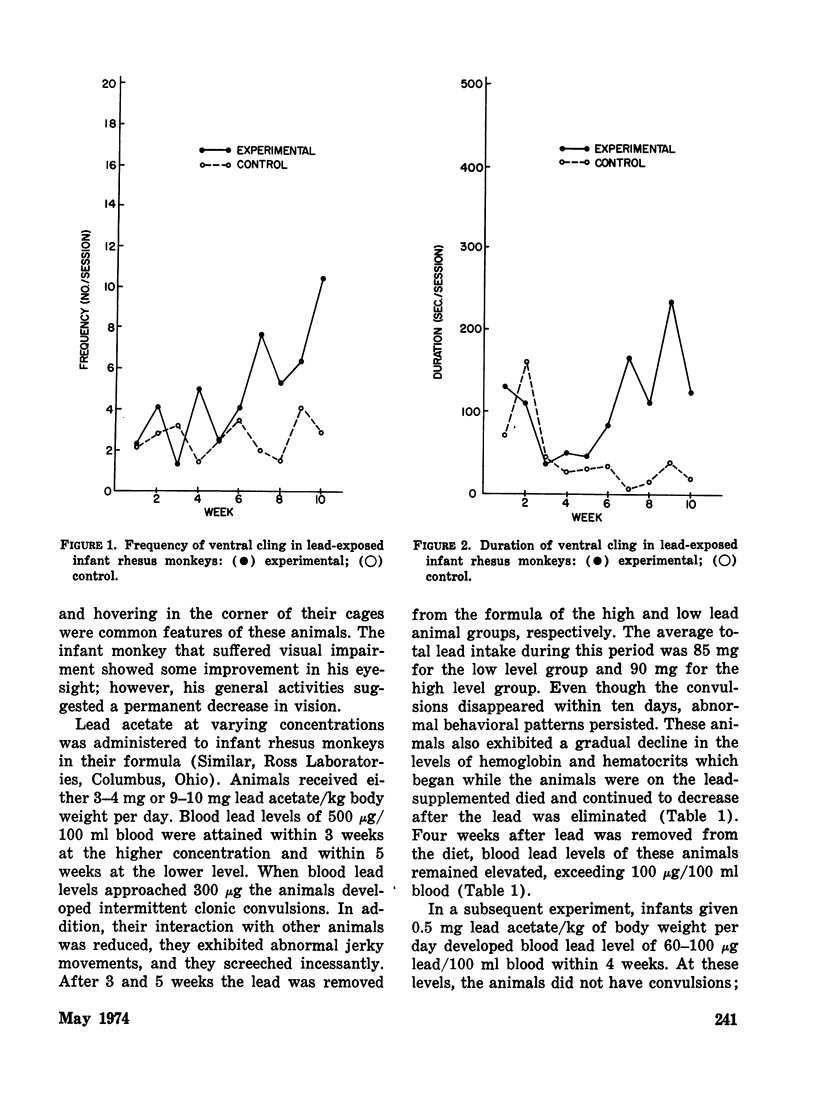
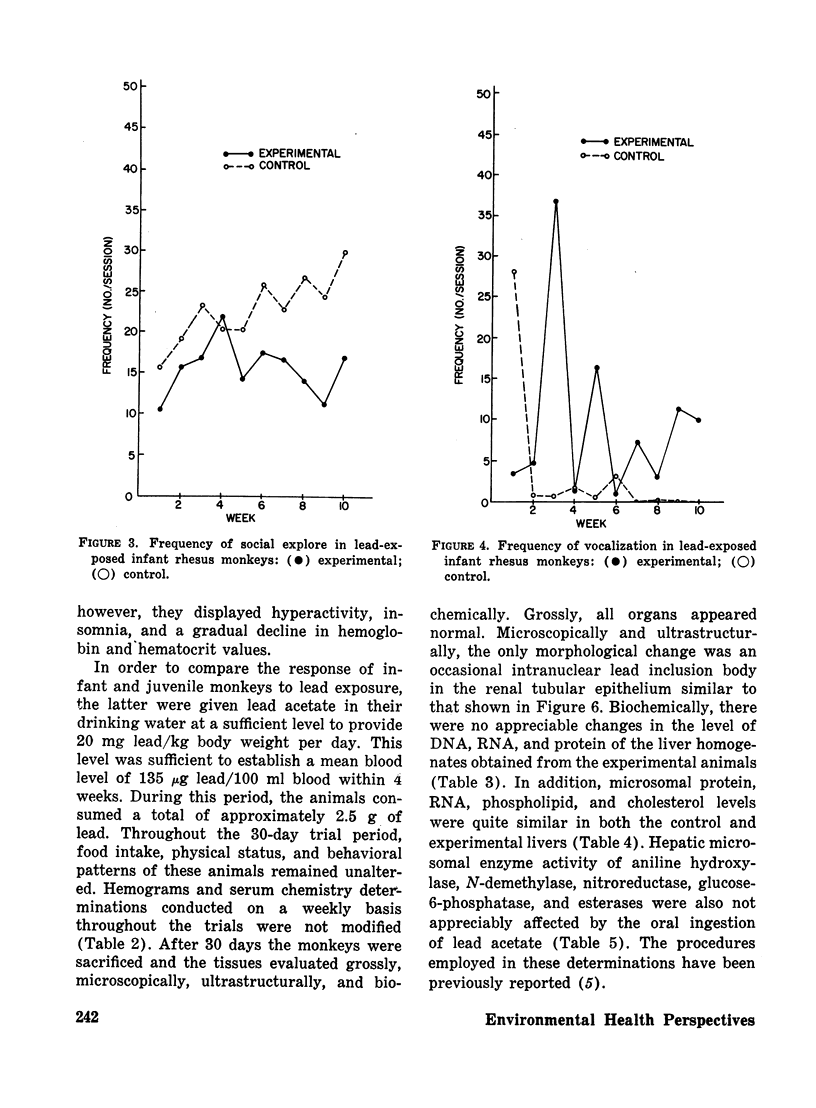
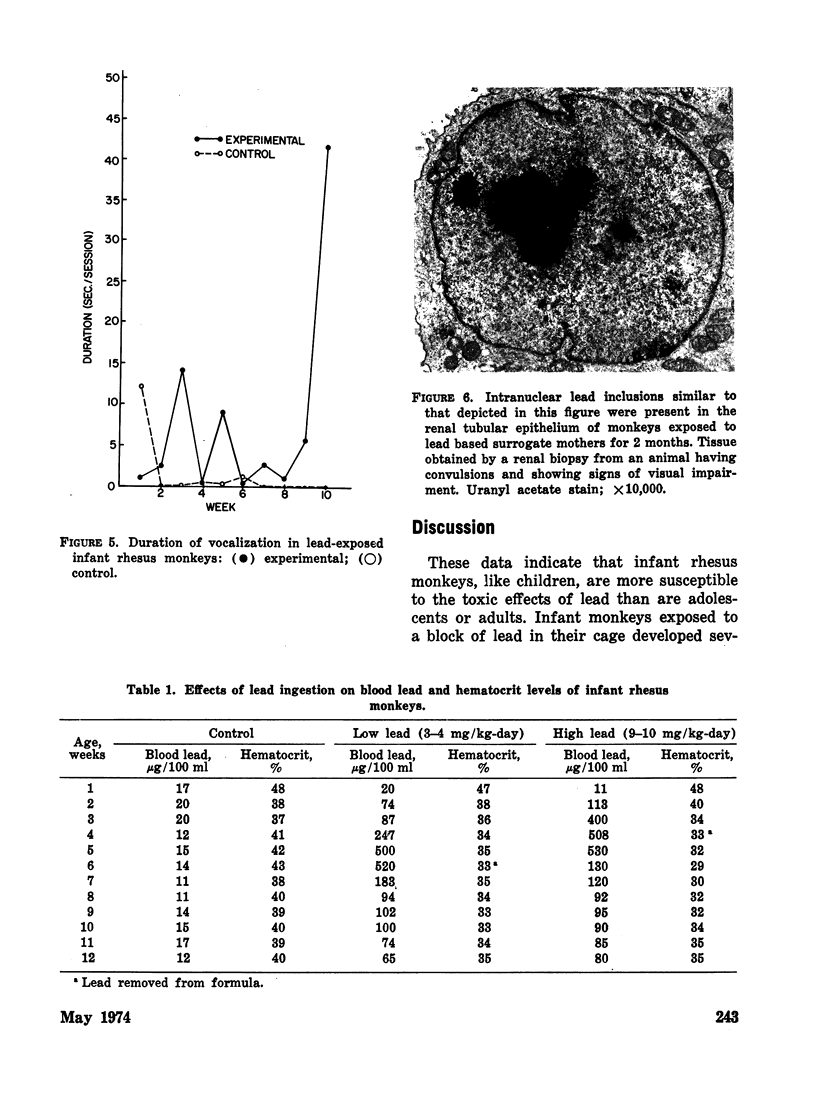
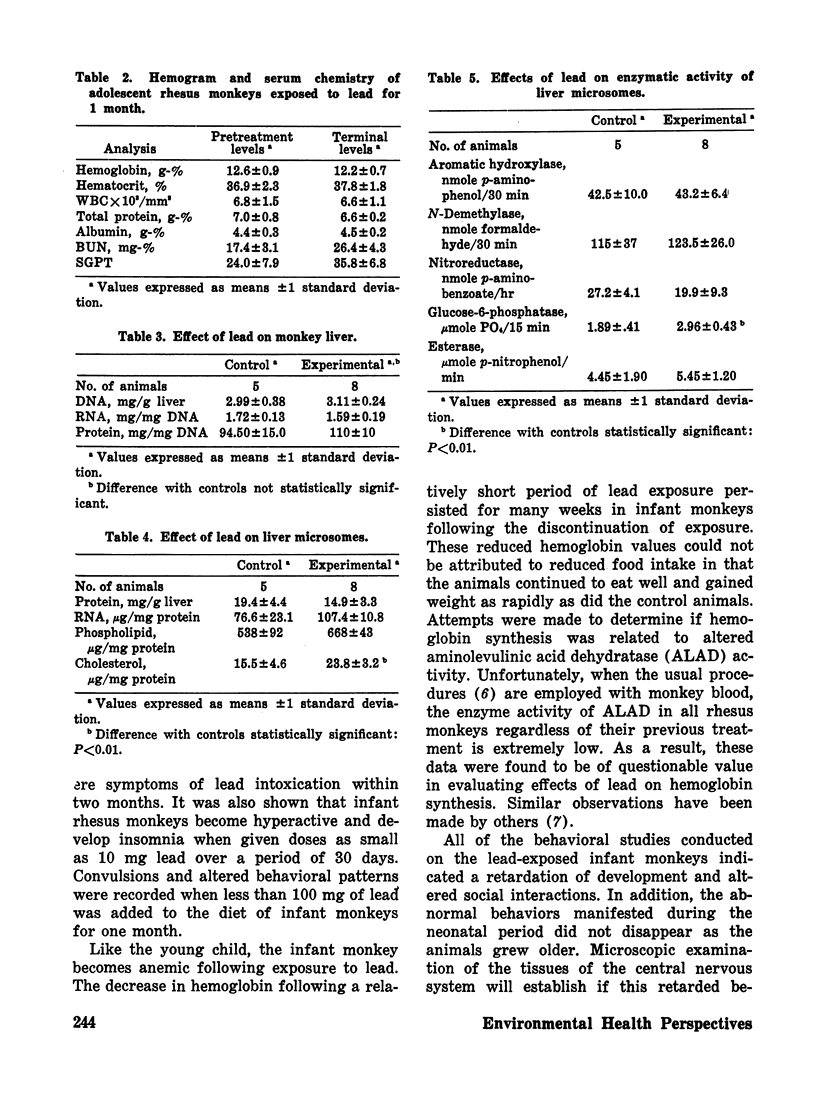
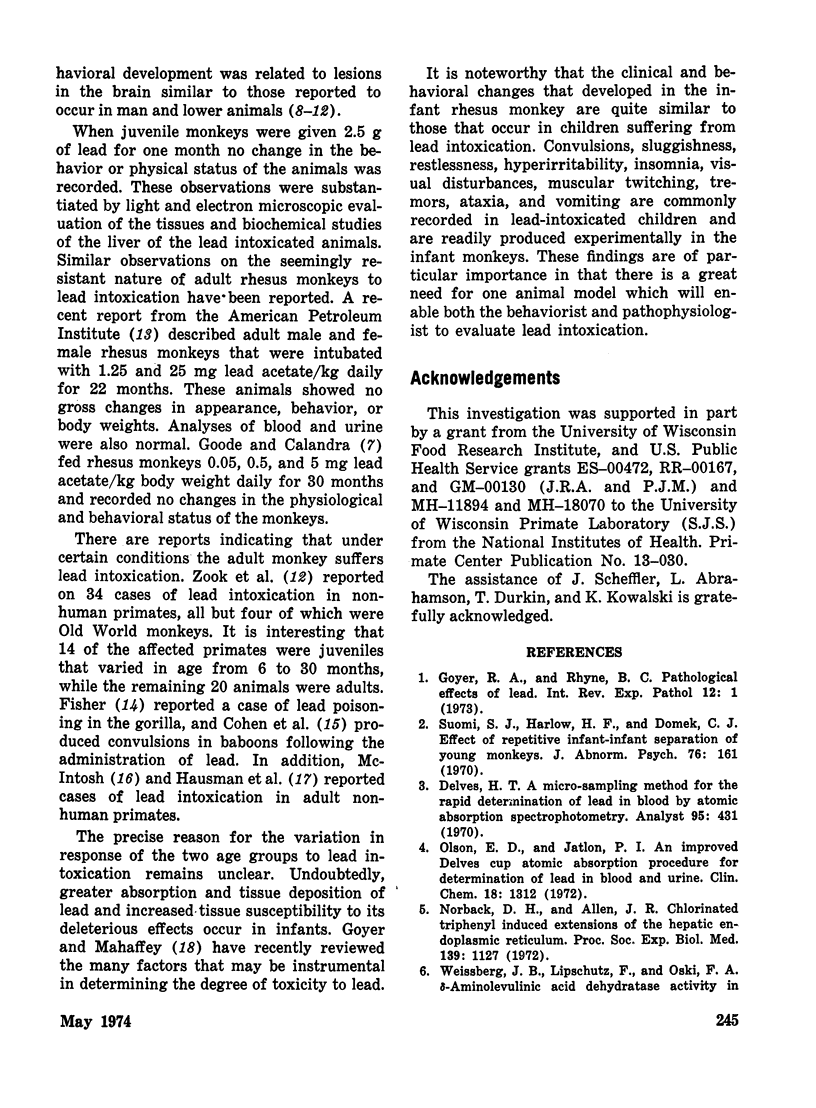
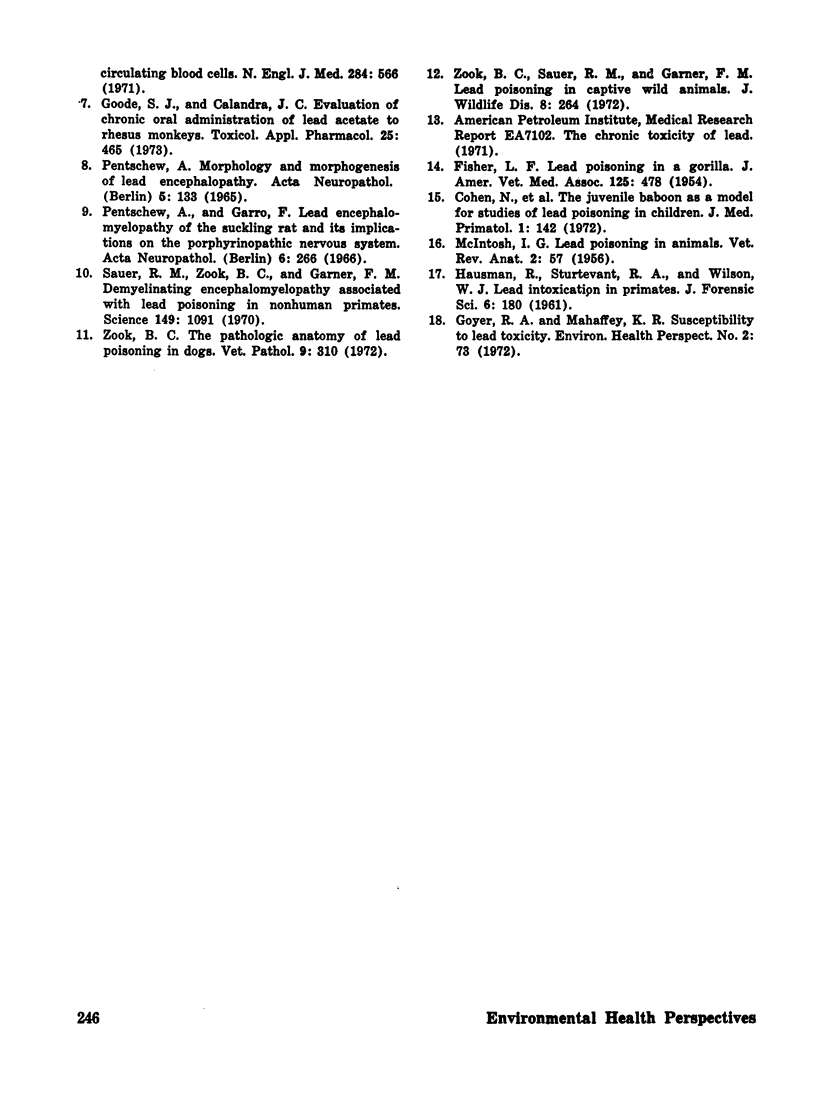
Images in this article
Selected References
These references are in PubMed. This may not be the complete list of references from this article.
- Cohen N., Kneip T. J., Goldstein D. H., Muchmore E. A. The juvenile baboon as a model for studies of lead poisoning in children. J Med Primatol. 1972;1(3):142–155. doi: 10.1159/000460377. [DOI] [PubMed] [Google Scholar]
- Delves H. T. A micro-sampling method for the rapid determination of lead in blood by atomic-absorption spectrophotometry. Analyst. 1970 May;95(130):431–438. doi: 10.1039/an9709500431. [DOI] [PubMed] [Google Scholar]
- FISHER L. E. Lead poisoning in a gorilla. J Am Vet Med Assoc. 1954 Dec;125(933):478–479. [PubMed] [Google Scholar]
- Goyer R. A., Mahaffey K. R. Susceptibility to lead toxicity. Environ Health Perspect. 1972 Oct;2:73–80. doi: 10.1289/ehp.720273. [DOI] [PMC free article] [PubMed] [Google Scholar]
- Goyer R. A., Rhyne B. C. Pathological effects of lead. Int Rev Exp Pathol. 1973;12:1–77. [PubMed] [Google Scholar]
- HAUSMAN R., STURTEVANT R. A., WILSON W. J., Jr Lead intoxication in primates. J Forensic Sci. 1961 Apr;6(2):180–196. [PubMed] [Google Scholar]
- Norback D. H., Allen J. R., Lalich J. J. Chlorinated triphenyl-induced extensions of the hepatic endoplasmic reticulum. Proc Soc Exp Biol Med. 1972 Apr;139(4):1127–1131. doi: 10.3181/00379727-139-36313. [DOI] [PubMed] [Google Scholar]
- Olsen E. D., Jatlow P. I. An improved Delves cup atomic absorption procedure for determination of lead in blood and urine. Clin Chem. 1972 Nov;18(11):1312–1317. [PubMed] [Google Scholar]
- Pentschew A., Garro F. Lead encephalo-myelopathy of the suckling rat and its implications on the porphyrinopathic nervous diseases. With special reference to the permeability disorders of the nervous system's capillaries. Acta Neuropathol. 1966 Jun 1;6(3):266–278. doi: 10.1007/BF00687857. [DOI] [PubMed] [Google Scholar]
- Pentschew A. Morphology and morphogenesis of lead encephalopathy. Acta Neuropathol. 1965 Nov 18;5(2):133–160. doi: 10.1007/BF00686515. [DOI] [PubMed] [Google Scholar]
- Sauer R. M., Zook B. C., Garner F. M. Demyelinating encephalomyelopathy associated with lead poisoning in nonhuman primates. Science. 1970 Sep 11;169(3950):1091–1093. doi: 10.1126/science.169.3950.1091. [DOI] [PubMed] [Google Scholar]
- Suomi S. J., Harlow H. F., Domek C. J. Effect of repetitive infant-infant separation of young monkeys. J Abnorm Psychol. 1970 Oct;76(2):161–172. doi: 10.1037/h0029809. [DOI] [PubMed] [Google Scholar]
- Zook B. C., Sauer R. M., Garner F. M. Lead poisoning in captive wild animals. J Wildl Dis. 1972 Jul;8(3):264–272. doi: 10.7589/0090-3558-8.3.264. [DOI] [PubMed] [Google Scholar]



